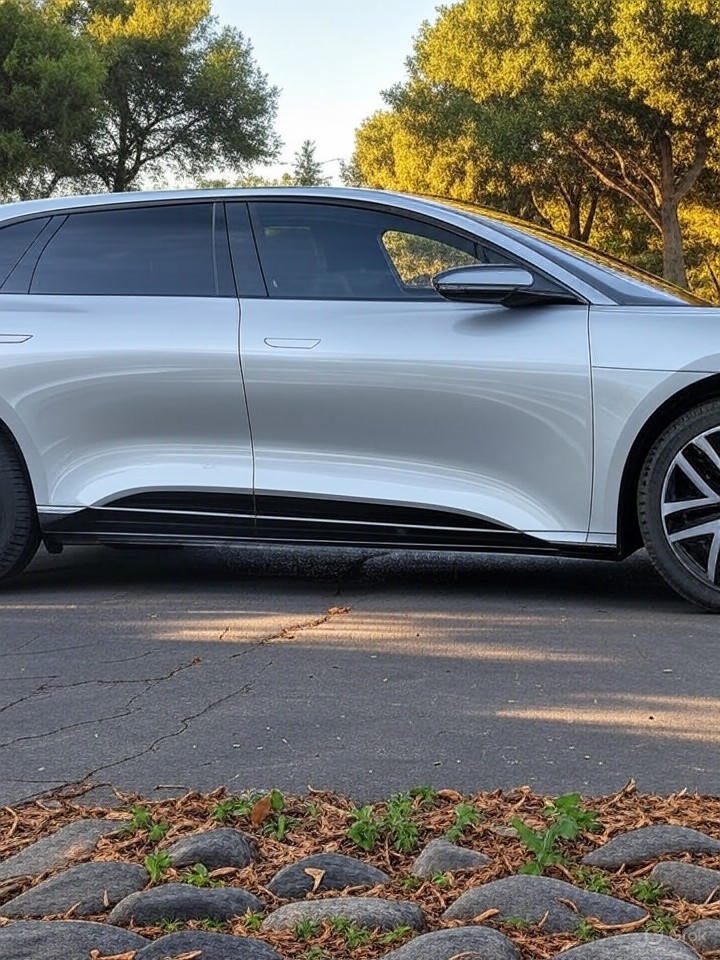In the competitive arena of electric vehicles, Lucid Motors is grappling with significant hurdles in ramping up sales of its much-anticipated Gravity SUV. Launched amid high expectations, the Gravity was positioned as a game-changer for the luxury EV segment, boasting impressive specs like a 440-mile range and rapid charging capabilities. However, recent data reveals a stark reality: only nine registrations in the U.S. during the first half of 2025, a figure that underscores profound production and supply chain issues.
Interim CEO Marc Winterhoff has openly attributed these setbacks to supplier constraints, particularly shortages of rare-earth magnets sourced from China. These components are critical for the vehicle’s electric motors, and geopolitical tensions have exacerbated availability problems. As reported in Automotive News, Winterhoff highlighted how these bottlenecks have throttled output at Lucid’s Arizona factory, forcing the company to revise its ambitious production targets downward.
Supply Chain Strains and Production Realities
Despite these challenges, Lucid has shown signs of recovery in recent weeks. Company executives claim that Gravity production in the past few weeks alone has surpassed the total output from the first half of the year, signaling a potential turnaround. This optimism is echoed in updates from Eletric-Vehicles.com, which notes increased activity at the Casa Grande plant. Yet, skeptics point to broader market dynamics, including softening demand for high-end EVs amid economic uncertainty and rising interest rates.
Lucid’s overall vehicle deliveries hit a record 3,309 in the second quarter, driven largely by its Air sedan, but Gravity sales remain negligible. Data from Motor Intelligence, as cited in various reports, indicated zero U.S. sales for the SUV in July, painting a picture of inconsistent momentum. This disparity raises questions about Lucid’s ability to scale multiple models simultaneously while competing against established players like Tesla and Rivian.
Market Sentiment and Strategic Responses
On social platforms like X, sentiment around Lucid Gravity reflects a mix of enthusiasm and frustration. Posts from Lucid Motors’ official account highlight innovative features, such as the vehicle’s NACS charging compatibility and trail-ready concepts like the Gravity X unveiled at Monterey Car Week, aiming to build buzz. However, user discussions often veer toward concerns over delivery delays and pricing, with the Grand Touring model starting at $94,900— a premium that may deter buyers in a cooling EV market.
To counter these headwinds, Lucid has introduced incentives like the Advantage Credit, equivalent to the $7,500 federal EV tax credit set to expire soon. According to Electrek, the company has actively refuted rumors of dismal sales, asserting that registrations don’t fully capture deliveries in progress. Analysts suggest this proactive stance is crucial, as Lucid aims for 20,000 units annually, though revised forecasts now hover lower due to magnet shortages influenced by international trade policies.
Broader Implications for EV Innovation
The Gravity’s struggles are symptomatic of wider industry challenges, where supply chain vulnerabilities can derail even the most technologically advanced ventures. Lucid’s partnership with Panasonic for high-performance batteries, as detailed on its own website, underscores efforts to innovate around these constraints, promising up to 200 miles of range in under 12 minutes of charging. Yet, with competitors like Ford and GM accelerating their SUV offerings, Lucid must navigate these production woes swiftly to maintain investor confidence.
Looking ahead, industry insiders speculate that resolving magnet supply issues—potentially through diversified sourcing or domestic alternatives—could unlock Gravity’s potential. Reports from InsideEVs indicate hundreds of registrations so far in 2025, a modest uptick that hints at building momentum. For Lucid, the path forward involves not just overcoming logistical barriers but also adapting to evolving consumer preferences in a market where sustainability meets luxury expectations.
Investor Outlook and Future Prospects
Wall Street’s take on Lucid remains cautiously optimistic, with shares fluctuating amid quarterly reports. The company’s push into concepts like the rugged Gravity X, promoted heavily on X, suggests a strategy to differentiate through adventure-oriented branding. However, as TechCrunch notes, meeting 2025 targets will require ramping Gravity production significantly, a feat that could redefine Lucid’s role in the EV space.
Ultimately, the Gravity’s sales challenges highlight the precarious balance between innovation and execution in the electric vehicle sector. With ongoing supplier negotiations and production tweaks, Lucid’s leadership is betting on a second-half surge to turn the tide, potentially setting a precedent for how startups weather global supply disruptions.




 WebProNews is an iEntry Publication
WebProNews is an iEntry Publication